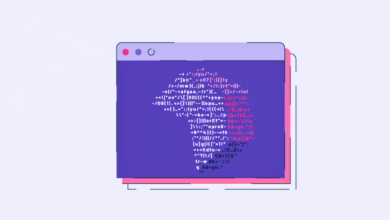Top 7 Trustworthy GRC Software for Effective Risk Management in 2025

Every time I meet with my InfoSec team, the challenge of managing governance, risk, and compliance feels like a moving target. Regulations change, risks evolve, and despite our best efforts, something always slips through the cracks. If you’re a compliance officer, risk manager, auditor, or CIO, you understand the struggle.
I’ve heard stories of teams drowning in spreadsheets, struggling to keep up with audits, or wasting time chasing policy updates. That’s likely why you’re here, searching for the best GRC software to bring order to the chaos and streamline your work.
As someone deeply involved in cybersecurity and consulting with industry experts, I’ve seen firsthand the difficulties faced by professionals like you. That’s why I’ve researched and identified the top 7 governance, risk, and compliance (GRC) software for 2025.
In this article, I’ll provide everything you need to know about these GRC tools – features, pros, cons, my personal review, and feedback from other users.
Here are my top picks for the 7 best GRC software for 2025:
1. AuditBoard for automating audits and SOX compliance.
2. Workiva for financial reporting and integrated compliance.
3. Scrut Automation for mid-sized companies automating compliance and security frameworks.
4. IBM Open Pages for scalable, AI-driven GRC solutions.
5. Hyperproof for evidence collection automation and multi-framework compliance.
6. Fusion Framework System for enterprises focused on business continuity and resilience planning.
7. LogicGate Risk Cloud for highly customizable GRC solutions.
These products are highly rated in the enterprise risk management category according to G2 Grid Reports. Pricing is available on request for most tools except for IBM Open Pages.
Whether you’re looking to streamline audits, gain better risk insights, or ensure compliance within your organization, this guide will help you find the right GRC software for your needs.
When evaluating GRC software, I focused on features that matter most to InfoSec, compliance, and risk teams. I prioritized ease of use with customization options, automation to reduce manual workloads, support for risk and compliance frameworks, and integration with existing systems.
By combining thorough research, input from my team, and AI-driven user reviews, I found the top 7 GRC tools that strike the best balance of functionality, usability, and value. These tools offer intuitive interfaces, automation of key processes, robust risk and compliance management capabilities, and seamless integration with other systems.
Choosing the right GRC software can make a significant difference in streamlining your compliance efforts and enhancing your organization’s risk management practices. With the right tools in place, you can navigate the complexities of governance, risk, and compliance with confidence and efficiency. I sought out tools with open APIs and pre-built integrations for seamless data sharing across platforms. In addition, I prioritized centralized policy and incident management features, including storage, version control, distribution, acknowledgment tracking, real-time incident alerts, root cause analysis, and SIEM integration. Advanced reporting capabilities, scalability, and mobility were also key factors in my evaluation, alongside robust data security measures and access controls.
Furthermore, audit and vendor risk management functionalities, along with support, documentation, and cost-effectiveness, were crucial considerations in selecting GRC tools. After evaluating over 15 options, I narrowed down my choices to seven standout tools that meet the needs of compliance and risk management professionals.
The reviews below showcase enterprise risk management software solutions that address various risk assessment, policy management, audit planning, and compliance training requirements. These solutions cater to the creation and communication of corporate policies, maintenance of regulatory standards, and support for audit programs and vendor risk assessments. Additionally, they facilitate business continuity management, training for compliance certifications, and analysis of ESG data from diverse sources.
One of the top GRC tools in the market is AuditBoard, trusted by half of the Fortune 500 companies. Its user-friendly interface, centralized risk information storage, and integrated platform for risk management, audit planning, and control testing make it a popular choice among professionals. The AuditBoard Business Intelligence dashboard provides actionable insights in real-time, while the AuditBoard AI feature simplifies document creation tasks using generative AI technology.
AuditBoard’s strong integration capabilities with various tools and systems streamline workflows and enhance collaboration across departments. However, some users have noted that setting up ABI dashboards can be time-consuming, and unexpected updates may cause confusion among users. Despite these minor drawbacks, AuditBoard remains a reliable and efficient solution for simplifying GRC processes and enhancing organizational risk management practices. – From my experience, the ease of setting up dashboards in AuditBoard can be time-consuming, and updates may catch users off guard due to automatic feature enablement without clear communication.
– G2 users have also noted that the permissions matrix in AuditBoard can be complex, and the constant release of new features can sometimes confuse users if not communicated properly by an active administrator.
– Workiva excels in financial reporting and compliance with its ability to link data across multiple reports and documents, real-time collaboration, and ease of use. However, some drawbacks include occasional system slowdowns and limitations in editing and formatting documents.
– G2 users appreciate Workiva for its intuitive financial reporting platform, data integration capabilities, real-time collaboration, and excellent customer support.
– Scrut Automation stands out for its balance of automation and usability in simplifying compliance processes, centralizing multiple compliance frameworks, and making policy management, risk tracking, and compliance audits more manageable for organizations. Setting up and customizing the tool can be time-consuming and may require a significant investment of resources.
Additionally, the high cost of IBM OpenPages compared to other GRC solutions can be a barrier for some organizations with limited budgets. This could make adoption more challenging for teams looking for a more cost-effective option.
Despite these drawbacks, if you are in a compliance-heavy industry and require a scalable, adaptable, and AI-driven platform to manage risks and compliance efficiently, IBM OpenPages is definitely worth considering. What I like about Fusion Framework System:
The platform’s structured approach to risk and resilience management is refreshing and effective. It focuses on what matters most, such as keeping risks visible, automating critical processes, and facilitating effective response strategies.
Fusion’s consolidation of various risk and compliance processes under one roof is incredibly convenient. It streamlines operations and ensures everything is interconnected.
The risk response automation feature is a standout for me. It doesn’t just track risks but also links risk assessments to business continuity and incident response plans, making it ideal for organizations prioritizing resilience.
Customizable dashboards and real-time reporting capabilities are invaluable tools that enhance our risk and compliance tracking efforts.
What G2 users like about Fusion Framework System:
“The Fusion Framework System is user-friendly, easy to navigate, and very intuitive. I appreciate the platform’s ability to consolidate various risk and compliance processes into a single, connected framework. The customization options for dashboards are excellent, allowing us to tailor them to our specific needs. Real-time reporting is a major plus as well.”
– Fusion Framework System Review, John D, Risk Manager.
What I dislike about Fusion Framework System:
Occasional slowness when handling large datasets or running complex risk reports can be frustrating, especially during time-sensitive situations or audits.
The deployment process for Fusion Framework System can be time-consuming, requiring significant effort to get the platform up and running smoothly.
What G2 users dislike about Fusion Framework System:
“The platform can experience slowness when dealing with large datasets or running complex reports, which can be frustrating during audits. Additionally, the deployment process for Fusion Framework System can be time-consuming and resource-intensive.”
– Fusion Framework System Review, Sarah M, Compliance Officer. While I do appreciate the flexibility of LogicGate Risk Cloud, it does come with some limitations that can be frustrating. The platform can feel overwhelming at first, and even after completing training, it may take time to fully understand its capabilities. Additionally, some users have noted that the customization options could be more extensive, especially when it comes to reporting and tracking granular relationships. Despite these drawbacks, LogicGate remains a powerful and highly customizable GRC tool that can address a wide range of compliance needs. Enhancing the functionality in this area would significantly increase its value.
LogicGate Cloud Risk has received some criticism from G2 users, with some finding it overwhelming, especially for new users within a company already using Risk Cloud. Despite this, there are other GRC platforms worth considering based on the G2 grid report, personal experience, and industry conversations.
Here are a few standout GRC platforms:
– Diligent One Platform (formerly HighBond): Ideal for organizations needing a comprehensive solution for audit, risk, and compliance with strong reporting capabilities.
– ServiceNow Integrated Risk Management: Best for enterprises looking to seamlessly integrate risk management into IT workflows and operations.
– OnSpring: Great for teams prioritizing flexibility and customization with a no-code platform for GRC processes.
– SAI360: Perfect for organizations requiring robust ESG capabilities alongside traditional risk and compliance management.
– Vanta: Suited for startups and SMBs seeking to streamline SOC 2 compliance with automated evidence collection and monitoring.
– Drata: The top choice for companies aiming for quick and efficient compliance with SOC 2, ISO 27001, and HIPAA.
Each of these platforms offers unique features, catering to different organizational needs. It’s worth exploring them further to find the best fit for your requirements.
FAQs on GRC Software:
1. Who uses governance, risk, and compliance software?
GRC software is utilized by compliance officers, risk managers, internal auditors, IT teams, legal teams, and executive leadership across various industries with stringent regulatory requirements.
2. Which industries benefit from GRC software?
Industries like financial services, healthcare, technology, manufacturing, energy, utilities, retail, and e-commerce benefit from GRC software to meet regulatory and compliance standards specific to their sectors.
3. What key features should you look for in GRC compliance software?
When selecting GRC software, prioritize features such as risk management tools, compliance tracking and reporting, workflow automation, third-party tool integration, customizable dashboards, analytics, and support for multiple compliance frameworks.
4. What is the cost of GRC software?
The cost of GRC software varies based on vendor, features, and deployment scale, ranging from $15,000 to over $50,000. Pricing models may include subscription fees, per-user licensing, or usage-based costs.
5. Can GRC software support multiple compliance standards?
Yes, many GRC tools can handle multiple compliance frameworks like ISO 27001, SOC 2, GDPR, HIPAA, and PCI DSS, allowing businesses to streamline compliance efforts across various standards.
6. How does GRC software help businesses maintain compliance?
GRC software automates manual tasks, tracks compliance deadlines, simplifies audits, keeps businesses informed of regulatory changes, and reduces the risk of errors, enabling proactive risk management.
In conclusion, the right GRC tools empower organizations to work more efficiently, confidently, and proactively in managing compliance and risk. Consider your team’s challenges, find a GRC platform that meets your needs, and take charge of your organization’s compliance efforts for a smoother and more effective workflow. phrase “the cat is black” as “the black cat.”



